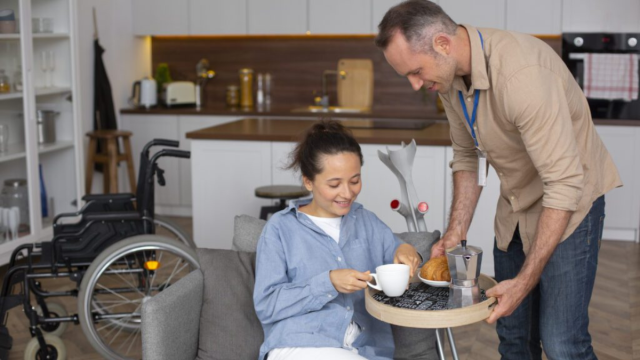Supported Independent Living (SIL) has become a transformative model of care within the National Disability Insurance Scheme (NDIS), providing tailored support that empowers people with disability to lead more independent, self-directed lives. Rather than simply offering assistance, SIL is designed to enhance the individual’s autonomy, build essential life skills, and foster community participation. For many Australians living with disability, SIL is a vital stepping stone toward achieving their personal goals and enjoying a more fulfilling life.
What is SIL and How Does it Work?
Contents
Supported Independent Living refers to the support services provided to people with disability who live in shared or individual accommodation. These services typically include help with daily activities such as cooking, cleaning, personal care, and medication management. The support is tailored according to each participant’s unique needs, preferences, and level of independence. But what is supported independent living? It’s more than just assistance — it’s a framework designed to enable choice, control, and confidence.
Encouraging Personal Growth and Life Skills
One of the most significant ways SIL promotes independence is through skill development. Participants are supported in tasks such as:
- Preparing nutritious meals
- Budgeting and financial literacy
- Cleaning and home organisation
- Managing health and wellbeing
- Using public transport and navigating their community
These are not just chores — they’re opportunities to build confidence and autonomy. By gradually learning and mastering everyday tasks with support, individuals can experience a greater sense of ownership over their lives.
Creating Safe and Empowering Home Environments
SIL arrangements are typically made in homes where participants live either on their own or with a small group of housemates. The physical environment, combined with the presence of experienced support workers, creates a safe yet non-intrusive space for people to thrive. This setup encourages social interaction and companionship while still respecting individual privacy and preferences. Importantly, SIL homes are designed to suit the participant’s needs — whether that involves accessibility modifications or quiet, low-sensory environments.
Promoting Community Connection
Independence isn’t limited to what happens within the home. SIL also helps participants engage with their local community, access employment opportunities, pursue hobbies, and build social networks. Support workers can assist with community outings, attending appointments, and participating in events, all while encouraging the individual to take the lead where possible. This community inclusion helps reduce isolation, boosts mental health, and builds the confidence needed to participate in society more fully.
Tailored Support, Individual Outcomes
No two people are the same, and SIL reflects this. Each support plan is created with the individual’s goals in mind. Whether someone is working towards full independence or simply wants to have more say in their daily routine, SIL providers work closely with participants and their families to ensure the support provided aligns with their aspirations. The flexibility and personalisation of SIL enable people with disability to live on their own terms — making choices about where and how they live, who supports them, and what goals they want to achieve.
SIL is about more than just support — it’s about empowerment
With the right guidance and environment, people with disability can live independently, develop essential life skills, and actively participate in their communities. Supported Independent Living is a powerful tool for turning aspirations into reality, helping people not only live; but thrive.


